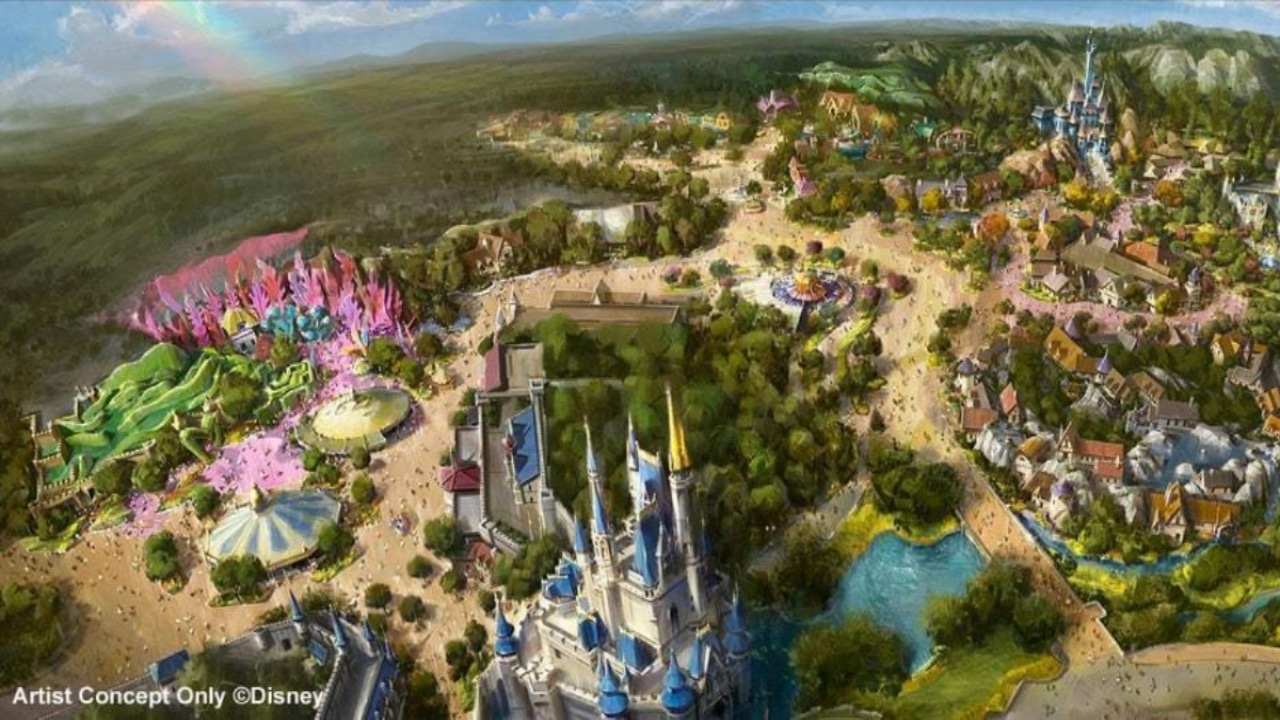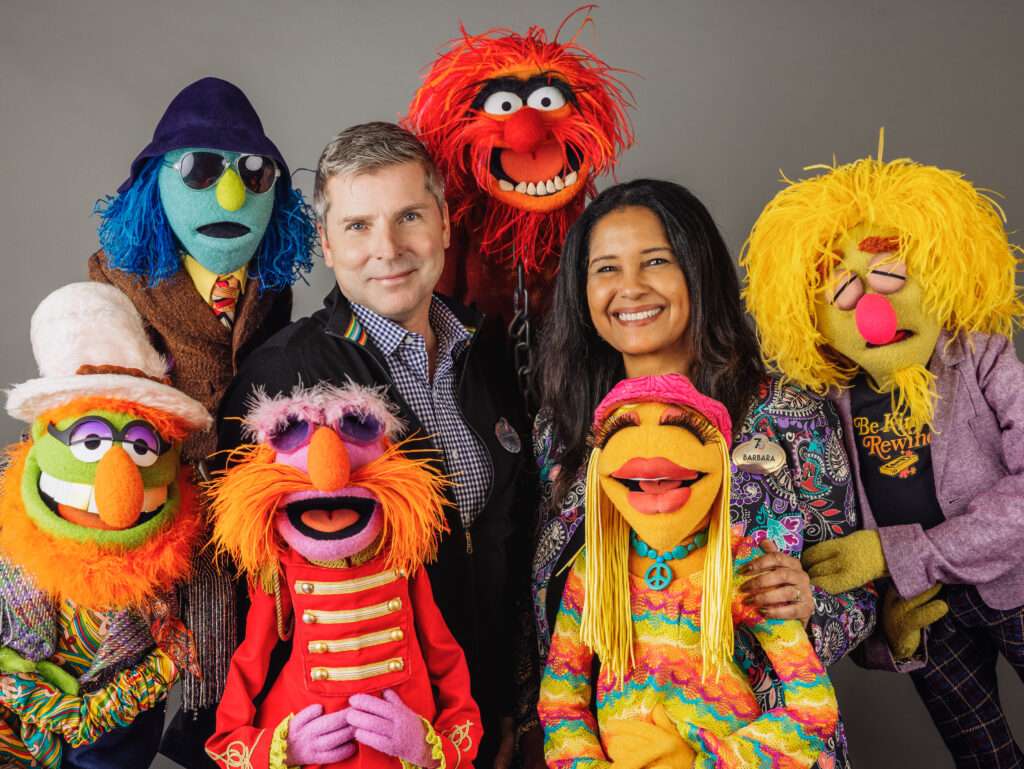Snippets from a new interview with Bruce Vaughn and InPark Magazine.
At what point do you consider whether to apply already existing Disney IP or create entirely new IP for an attraction?
There are a lot of things we consider when we’re beginning to think about exactly what story or what world or what characters will be in a project. And given we’re a global company, there’s cultural things we want to think about. We need to know our audience and what is going to resonate with them. Walt knew to lean into the classic fairy tales that were part of the fabric of childhood, but he also explored other stories – of the past and future, of adventures in deep space and under the sea, and beyond. The thing that has changed over the course of my career is the amount of IP that we can consider when developing a new experience, and whether it is the best fit for what we’re trying to accomplish.
For our guests, they want to see those characters. They want to be in those places. But there are other stories, real life stories. So, we always try to make sure we’ve looked at the edges of ideas and then narrow in on what we feel is going to really deliver the most compelling thing for the guest.
We often try to find the best idea, which might sometimes be something that is a little more perhaps just iconic or has some sort of nostalgic kind of feel, or when we’re thinking about future things, we look at aspirational things in the real world.
You’ve said you like to shake things up, keep your staff on their toes, which makes them more productive. Tell us about that.
It’s sort of a balance. You want people to gain expertise and there is some repetition in that. They’re going to continue to do something, but you’re always looking for people to evolve and hone their skills. The main thing that I’ve seen in my career at Imagineering and outside has been leveraging technology. This was very core to Walt Disney as well. He was a master at leveraging technology and one of my other heroes, George Lucas, did the same – just think of what he did to create Industrial Light & Magic, a firm that is now used by so many studios, not just Disney, because they’re so cutting-edge and high quality. Similarly, Walt endlessly brought in technical innovations to further immerse people into stories. And this also comes from my
Bran Ferren days. So I had this exposure throughout my life.
The thing I always encourage in all of our Imagineers is to improve the process of bringing an idea from the initial kernel to its final product. I encourage adopting, playing with, and experimenting with new ways to go about it and technology is usually the most powerful tool.
What current and emerging technologies are you excited about?
Drones fascinate me a lot, and we’ve begun to use those at our parks in Paris and other places. I think that we’re just scratching the surface with what can be done with them. Our nighttime spectaculars are a huge win, but spectaculars don’t always need to be done at nighttime. The thing I also love about our business, where we’re putting people into physical environments, immersive worlds, is that there are all these dimensions, including above you. We mostly do it in a way that gathers people in one place, focused on one spot. I think with some of these new technologies, like drones, you can begin to think differently about how you deliver those kinds of shows and how you can spread it out or pepper these kinds of experiences throughout a day.
I’m excited about where advanced technology could take us. Some of us get resistant to new technology as we get older, but when you’re in a dynamic place where there’s a broad spectrum of people in various phases of their careers from just beginning to incredibly seasoned, I love this idea of reverse mentoring. Wisdom is being passed down from those who have the most experience, but they’re also learning from people bringing in new ideas and ways of doing things. I learned that from my students at UCLA when I was a professor there, and I hired many of them as interns many years ago, because they would come in and literally, with the new digital tools and other things, revolutionize how we could go about developing projects or demonstrating projects or getting prototypes up fast.
The faster you can evolve an idea, the better its state. I think AR is going to do this and AI could take us in that direction as well. I think then we can move faster without compromising the process. That’s the kind of thing I mean when I say you want to be disruptive and keep people fresh.
How do you and Barbara Bouza collaborate?
When I first met Barbara, I realized we’re two halves of one brain. That’s how we need to function as leaders, and we do. Her architectural background is different from mine. I’m from more of a story background.
We’ll do joint meetings where we want the two parts of the brain there — Barbara from a deeper business and architecture side, and me, from a creative design, story, theater, and movie background. Barbara has massive experience in delivering complex projects that serve the public, like stadiums, hospitals, and community gathering places. And so that half of the brain is super important, because the project has to come up from the ground and deliver in function and be maintainable.
What impact does Bob Iger’s mandate about returning control of the company to the creatives have on Imagineering?
That’s the Imagineering culture I know. You’ve got to keep creativity and innovation in a leading role. Of course, a designer spends a lot of time understanding the business as well, because ultimately this has got to function as a business. The various operators around the world are our partners, and they know what works in their part of the world and with their guests.
It’s important that the creative side and the business side stay in balance with one another. The creative process is very fragile. I think that’s what Bob Iger is being most clear about: we need to be respectful of the talents and appreciate one another’s strengths and let everybody be at the table together to help create. Our product is ultimately a creative product that also turns into really good business because it makes people happy.
Why is now the perfect time to return to Imagineering?
Around the world, we’re all coming out of our COVID caves, from the darkness into the light. If you look at the performance of our parks, it’s clear people have been yearning for them. There’s the pent-up need to gather and do things together, in safe, reassuring environments. There’s probably no better time to be an Imagineer than right now, because we’re the folks who create exactly those types of experiences. We’re seeing huge popularity around the world. We’re seeing growth, we’re seeing the brand and the various franchises that Disney stands for resonate around the world.
Returning after seven years brought home to me how unique this organization is. You have an idea and then you say, “Okay, well, how are we going to get this done?” At Imagineering, we have the resources to make things happen – and Imagineers will find a way to do it.
At the end of the day, this is all for the guests, not for us as designers. We’re serving the guests here. And we want them to come in and get what they are expecting and what they want in ways that are unexpected.
Full interview linked below.
"At the end of the day, this is all for the guests, not for us as designers."

www.inparkmagazine.com




